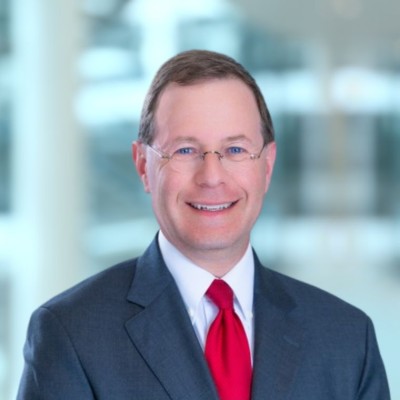Supreme Court Issues Key Decisions on Public Officials’ Use of Social Media and Ability to Block Commenters
By: Jason Torchinsky and Oliver Roberts
On March 15, 2024, the Supreme Court issued a unanimous opinion in Lindke v. Freed and a per curiam opinion in O’Connor-Ratcliff v. Garnier addressing when a public official may prevent a person from commenting on the public official’s social media page. This issue has percolated in the lower courts for years, and with today’s decision, the Court has created a framework for determining when a public official speaks in his or her official capacity on social media. The determination is critical because when a public official uses social media to conduct official business, the First Amendment protects the public’s ability to comment.
Background
In Lindke v. Freed, James Freed was the city manager of Port Huron, Michigan. Freed maintained a Facebook page where he posted about both personal and state official topics. Freed commonly replied to inquiries from constituents on this Facebook page, while also posting about his personal life and family. Kevin Lindke, a private citizen, commented on Freed’s Facebook posts and expressed his displeasure with the city’s approach to the COVID-19 pandemic. Freed deleted Lindke’s comments and eventually blocked him from commenting on his posts. Lindke sued Freed under 42 U. S. C. §1983, alleging that Freed violated his First Amendment rights. Lindke argued that Freed acted in his “public” capacity when he silenced Lindke’s speech, while Freed argued that he acted in his own “private” capacity. The case turned on whether Freed acted in a “private” or “public” capacity.
In O’Connor-Ratcliff v. Garnier, two individuals created social media pages while they were candidates for the Poway Unified School District Board. After they won their elections, the two individuals—now turned public officials—continued to use their Facebook pages to post content related to the school, and they also communicated with constituents using their Facebook pages. Facebook users Christopher and Kimberly Garnier regularly left critical comments on the public officials’ Facebook posts and then-Twitter (but now “X”) posts. The public officials deleted the Garniers’ comments and then blocked the Garniers on social media. Like Lindke, the Garniers sued the public officials.
The Court’s Decisions
The Court held that a public official’s social media activity is “public” and attributable to the State only if the public official “(1) possessed actual authority to speak on the State’s behalf, and (2) purported to exercise that authority when he spoke on social media.” Lindke v. Freed, 598 U.S. __ (2024), at 8. If this standard is not met, and the public official is found to have acted in a private capacity, then the blocking of a person’s comments is permissible.
With respect to the first prong, the Court explained that “[a]n act is not attributable to a State unless it is traceable to the State’s power or authority.” Id. at 9. This power or authority must come from “written law or longstanding custom to speak for the State” and “extend to speech of the sort that caused the alleged rights deprivation.” Id. at 12.
With respect to the second prong, the public official must also purport to exercise the state authority when taking the relevant action; otherwise, “he is speaking in his own voice.” Id.
In Lindke, the Supreme Court also emphasized two key points that public officials should consider when engaging on social media.
- First, the Court highlighted the importance of public officials including labels or disclaimers on social media accounts to clearly indicate whether accounts are “public” or “private.” The Court observed that if Freed’s Facebook account had contained a label such as “this is the personal page of James R. Freed” or “the views expressed are strictly my own,” then he would have been “entitled to a heavy (though not irrebuttable) presumption that all of the posts on his page were personal.” Id. at 13.
- Second, the Court warned that public officials face a high risk of liability when they operate a “mixed use” social media page (i.e., posting both public and private topics) and block people from that page. Specifically, the Court observed that the act of deleting a person’s comments and the act of blocking a person are treated differently by the courts. For the comment-deletion analysis, the Court only evaluates the relevant posts that Lindke commented on. However, for the blocking analysis—which “operated on a page-wide basis”—the Court evaluates whether Freed “had engaged in state action with respect to any post on which Lindke wished to comment” at any time following the blocking of Lindke’s account. Id. at 15. The Court concluded, “[i]f page-wide blocking is the only option, a public official might be unable to prevent someone from commenting on his personal posts without risking liability for also preventing comments on his official posts.” Id.
In Lindke, the Court did not decide whether James Freed acted in his capacity as a government official when he deleted Kevin Lindke’s comments, and then blocked him altogether. Instead, the Court remanded the case to the Sixth Circuit Court of Appeals with instructions to apply the newly announced public-versus-private standard. Similarly, in O’Connor-Ratcliff, the Supreme Court remanded the case to the Ninth Circuit for resolution consistent with the two-prong Lindke test.
The Court’s analysis and warnings indicate that, in many cases, public officials can avoid First Amendment violation issues by properly labeling their personal social media pages and by not making official pronouncements on their personal pages. However, social media is essential to public and elected officials in communicating with the public about governmental business. Today’s decisions are likely the start of what will be many years of litigation in the lower courts setting forth tests and boundaries that further refine how the First Amendment applies to public and elected officials and social media.


